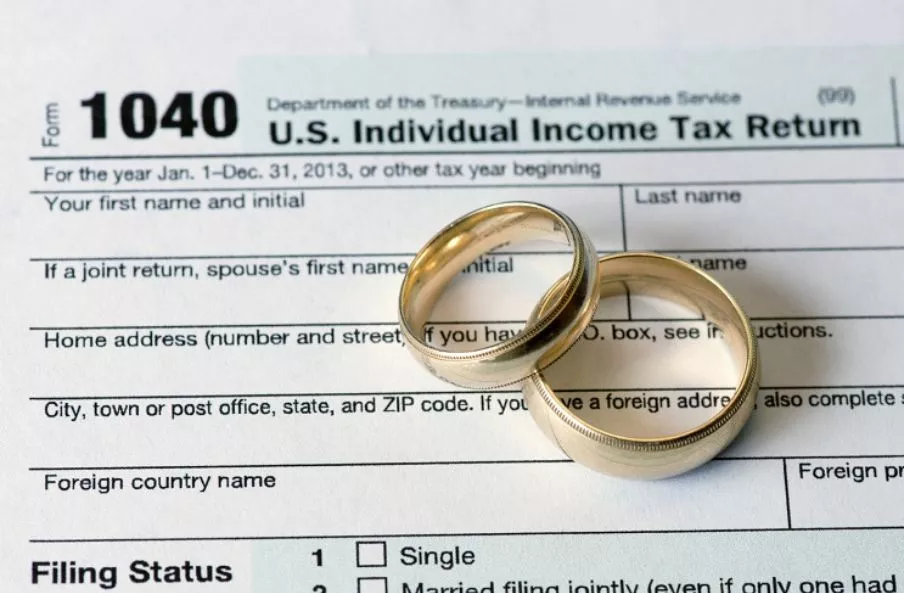Getting into tax debt is a serious problem – especially when you have no idea how you ended up owing the IRS money. Unfortunately, that is the case for thousands of Americans who find themselves on the other end of frightening notices and warning letters indicating that they might face financial penalties and growing tax liability if they don’t pay what they owe. If you are married and file jointly with your spouse, something they did landed you both in jointly hot waters.
Thankfully, the IRS does distinguish between a guilty and an innocent spouse. But it’s not relatively as easy as pleading your innocence to an IRS agent and hoping they believe you. IRS innocent spouse relief is one of the few ways to reduce or eliminate your tax debt with the IRS.
In this case, the debt does not go away – instead, the IRS transfers full liability to the guilty spouse (or, in many cases, ex-spouse). Not all tax debt is nefarious – in fact, most tax debt explicitly isn’t. It’s unfortunately relatively easy to get in debt with the IRS; case in point, the American public owed roughly $114 billion in back taxes in 2020 alone.
Sometimes, it’s as easy as forgetting a due date, writing off an expense you didn’t cash, or forgetting to report a significant chunk of income from your side hustle. Even if it’s relatively straightforward that only one of you made the mistake that got your joint account in trouble, the IRS will still want to thoroughly investigate your case before accepting innocent spouse relief. Here’s what you should know.
What Is IRS Innocent Spouse Relief?
To summarize, IRS innocent spouse relief is a potential action a taxpayer can pursue to limit or altogether avoid collection actions taken against them by the IRS in pursuit of back taxes and ongoing tax liability. Even if you’ve divorced the guilty spouse and written up a court order mandating them to pay everything, the IRS will continue to hound you until you formally request innocent spouse relief. You are not guaranteed to receive it.
To drive that point home, here’s a little statistic. In 2021, the IRS received over 26,000 applications for IRS innocent spouse relief – it granted less than five thousand of these applications. Why is it so difficult? Well, simply put, innocent spouse relief can be a little subjective. The criteria for spouse relief are unclear, and whether someone fits the bill is decided by the IRS on a case-by-case basis. You can appeal whatever decision the IRS makes, so don’t give up on your first try.
Do, however, seek professional tax advice immediately. Reading up online is not enough! Find legal professionals specializing in tax law and IRS tax debt, and go over every detail of your situation before approaching the IRS for relief. But hurry – when it comes to tax debt, time is of the essence. The IRS can continue to levy penalties and pursue collection actions until you respond with a valid request to avoid the debt or a payment plan. Let’s go over your relief options.
Path One: Seeking Complete Relief
IRS innocent spouse relief, or complete relief, is precisely what it sounds like. You plead that you had no part in the tax debt and wish to be relieved of the responsibility of paying back taxes and associated penalties and interest. To receive total relief, you must meet all the following three requirements:
- You and your spouse filed a tax return with an understatement of tax solely attributable to an item your spouse included. This item involves income your spouse received but did not report. This can consist of incorrect or improper use of tax credits, deductions, or property basis in calculating your joint tax liability.
- You can establish, with some hard proof, that you signed the return not knowing of the understatement and prove that you had no need to know and no reason to know (i.e., it was related to your spouse’s business dealings, which you have no part in, or was related to their side gig/paid hobby, which you never involve yourself with, etc.).
- Given your statements, the facts you provide, and the circumstances of your marriage (pending separation, income was hidden from you, etc.), it would be unfair to hold you liable.
If this is partially true, you have two other options remaining.
Path Two: Separation of Liability Relief
Separation of liability is only available to married couples living separately pending divorce or divorced couples who were still filing jointly at the time of the tax debt. In this instance, you and your spouse request that the IRS split your liability based on how the debt is best allocated between you.
Each of you is responsible, albeit separately and perhaps unequally. This option is also available to widowed spouses, provided the other spouse died more than 12 months before you elect to split the debt. You argue that part of the liability died with your spouse in this instance. To qualify for this form of tax relief, you must:
- Be divorced, legally separated, or widowed.
- You have not been a member of the same household as your spouse for the past 12 months.
- You only know the item that gave rise to the tax deficiency if you can prove you were forced to sign the joint tax return.
Path Three: Equitable Relief
Last but not least, your final option is to seek equitable relief. The only difference between innocent spouse relief and equitable relief is that equitable relief is subjectively made available to anyone who fits the criteria of “it would be unfair to hold them liable,” given certain circumstances. These may include:
- Domestic violence or abuse.
- Health condition when signing the return (i.e., may not fully understand what was happening).
- Current and future tax compliance with the IRS.
- And more.
It’s Not Over Yet
IRS innocent spouse relief is one of the few ways to get around paying the IRS a hefty sum for your tax debts. But if you did not qualify for innocent spouse relief under any capacity, and could not appeal your debt, don’t worry – it’s not over yet. There are still ways to minimize your tax debt, especially if you still need the financial means to pay it back anytime soon. Be sure to discuss your options with a tax professional, and carefully consider your payment plan options and potential offers in compromise.

